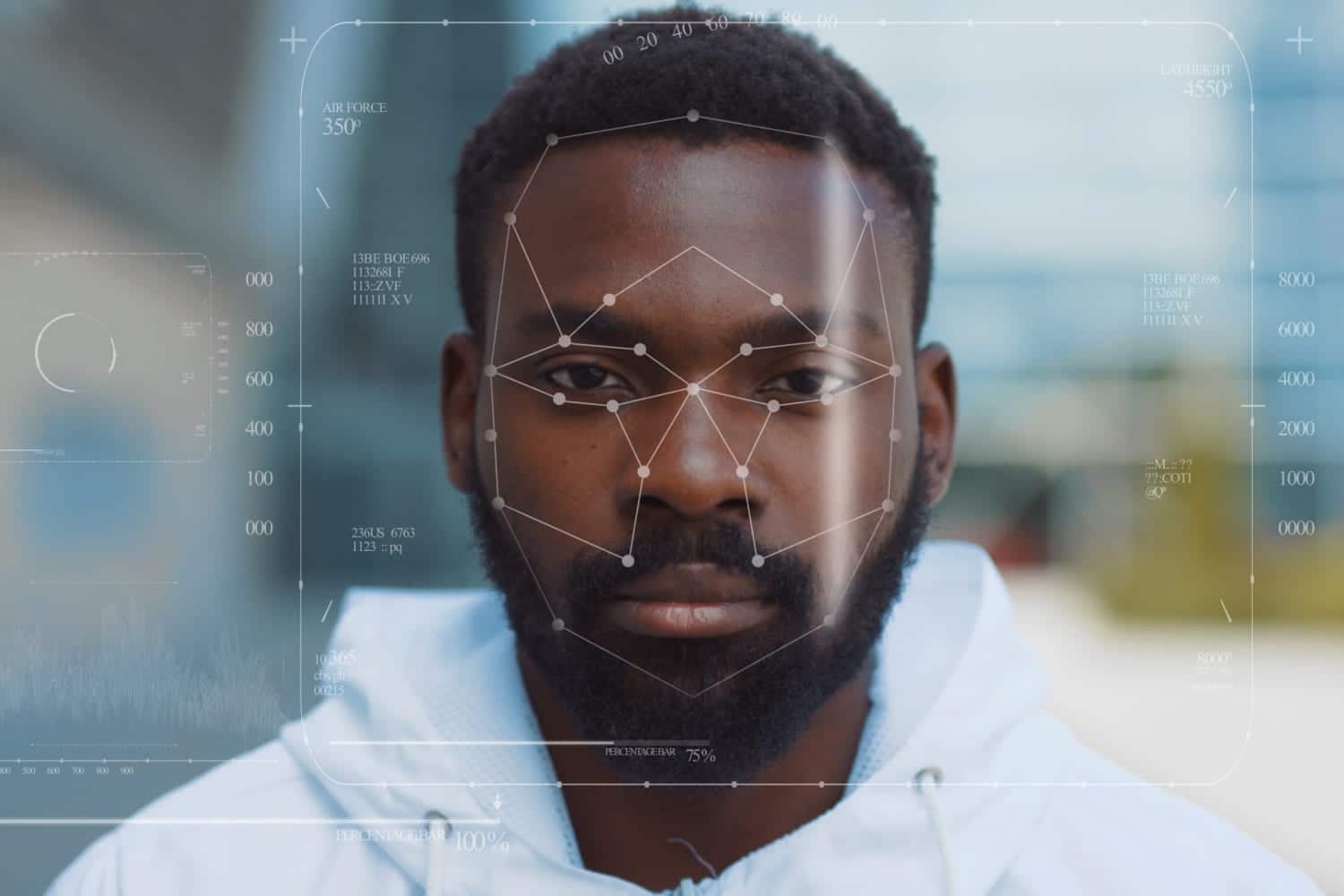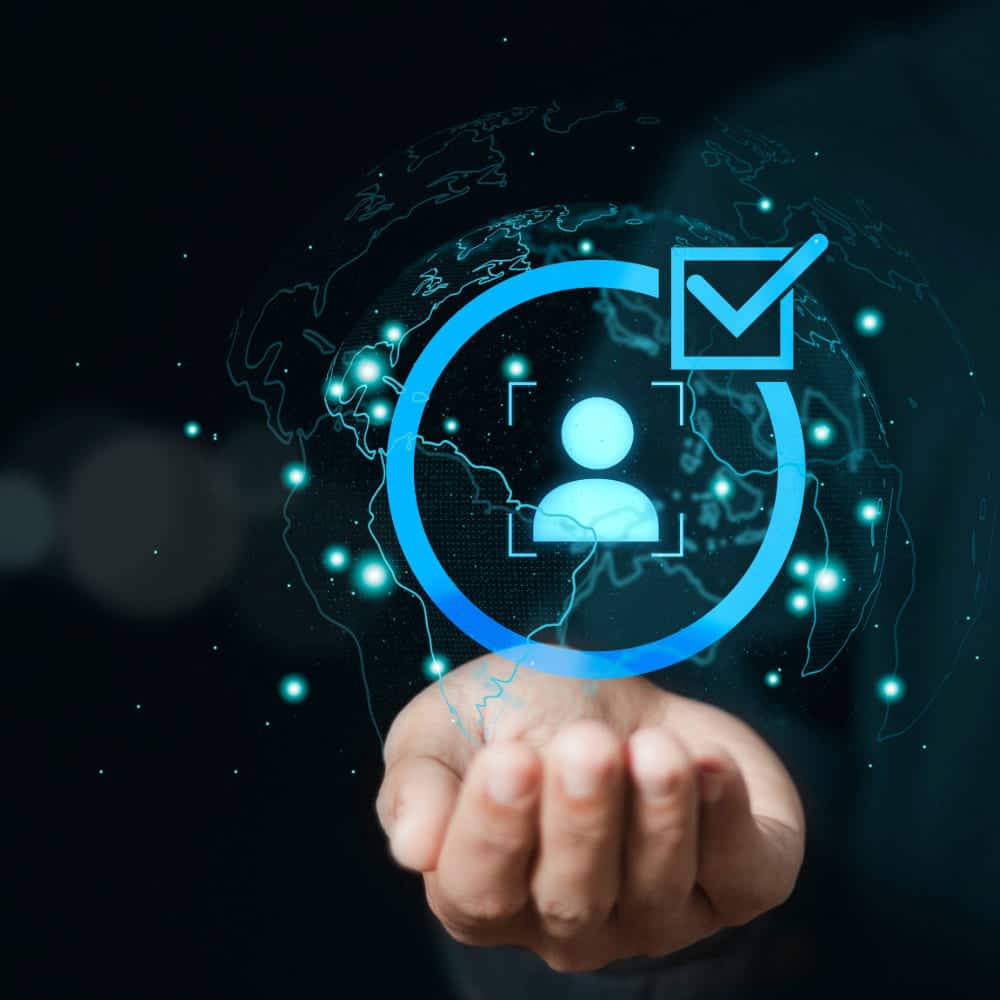For financial institutions, KYC goes beyond mere data collection, encompassing a comprehensive understanding of customers' financial profiles and activities.
Facial biometrics: what is facial recognition and what is it used for?

Technology has advanced by leaps and bounds in recent years, and one of the areas with significant progress is facial recognition, which has revolutionized how we interact with technology and security systems.
Origin of facial recognition systems
T
he concept of facial recognition is not new; in fact, it dates to the 1960s when Woody Bledsoe, Helen Chan Wolf, and Charles Bisson, researchers at the Artificial Intelligence Laboratory at Stanford University, developed a rudimentary system to recognize human faces. However, major advancements did not occur until the late 20th and early 21st centuries when computing and image processing capabilities reached levels that allowed the development of highly agile and sophisticated systems.
What facial biometrics involves
Facial biometrics relies on capturing and analyzing unique facial patterns to identify a person. It uses distinctive features such as the distance between the eyes, the shape of the nose, the contours of the mouth, and other facial details to create a unique model of the individual. This model is then compared to facial features stored in a database to determine a person’s identity.
Current facial recognition systems are based on the use of Artificial Intelligence and deep neural networks, enabling highly accurate identification of whether two images belong to the same person.
The process begins with capturing an image or video of the individual’s face, which is then processed using advanced facial recognition algorithms. These algorithms analyze specific features and convert them into data that can be compared with previously stored models.
Benefits of facial biometrics
Facial biometrics offers a range of benefits that have made it a valuable tool in various sectors:
- Reinforced Security: Facial recognition technology provides an additional level of security by requiring precise matching of unique facial features to authenticate a person’s identity, leaving little room for errors.
- User-Friendly: Unlike traditional passwords, facial recognition does not require individuals to remember complex combinations of letters and numbers. It is a natural and easy-to-use process.
- Time Efficiency: Facial recognition systems can process identification within seconds, saving time and streamlining authentication processes in various applications.
- Versatile Applications: Facial biometrics is used in various applications in sectors such as banking, gaming, or travel.
Utilities of facial recognition
Facial recognition systems have diverse applications and utilities in different areas. Some notable functions include:
- Security and Surveillance: Facial recognition systems are used in security and surveillance environments to identify people in real-time, crucial in places like airports, train stations, stadiums, and other public areas requiring constant monitoring.
- Access Control: Many companies and organizations employ these systems to manage access to buildings or restricted areas, enhancing security by ensuring that only authorized individuals can enter.
- Mobile Devices: Facial recognition has become common in mobile devices to unlock smartphones and tablets, providing a convenient and quick way to access devices without the need for passwords or codes
- Crowd Person Identification: In massive events or crowded places, facial recognition can help identify wanted individuals or those who may pose a security risk.
- Authentication in Financial Transactions: Some financial institutions and payment platforms use biometric methods as an additional authentication method to ensure security in transactions.
- Attendance Control: In workplace or educational settings, facial recognition automates attendance recording, eliminating the need for traditional methods like ID cards or manual lists
- Entertainment Applications: Facial recognition systems are also used in entertainment applications, such as augmented reality filters on social media, games, and interactive experiences.
- Process Automation: By incorporating this advanced technology into automated processes, such as check-in kiosks at airports or attendance registers at events, efficiency is improved, and the need for human intervention is reduced.
- Age Verification: Facial recognition stands out as a key ally in age verification, ensuring access to appropriate content by accurately identifying users. On digital platforms, restricted product outlets and age-restricted venues, this technology ensures compliance with regulations and prevents unauthorised access. Its implementation in online games and adult services helps to create safe and appropriate environments. It also streamlines e-commerce registration processes, improving authentication and transaction security.
Can facial recognition replace passwords?
The question of whether facial recognition can completely replace passwords is complex and depends on various factors. While facial biometrics offers significant benefits in security and convenience, concerns about privacy and the potential for manipulation exist. Consumers should not blindly trust companies requesting any type of biometric data, as it is highly sensitive and inherent to the individual. Organizations demanding biometric data must provide informed consent and define the purposes for which this information will be used or the timelines for its deletion after fulfilling its purpose.
Facial recognition can be an excellent option for certain scenarios, but it is not foolproof. Biometric data can be vulnerable to impersonation and theft, leading some experts to advocate for a multifactor authentication approach that combines facial biometrics with other forms of authentication, such as one-time passwords (OTP) or PIN codes.
Contact our biometrics experts and find out what our identification systems can do for your company.
























